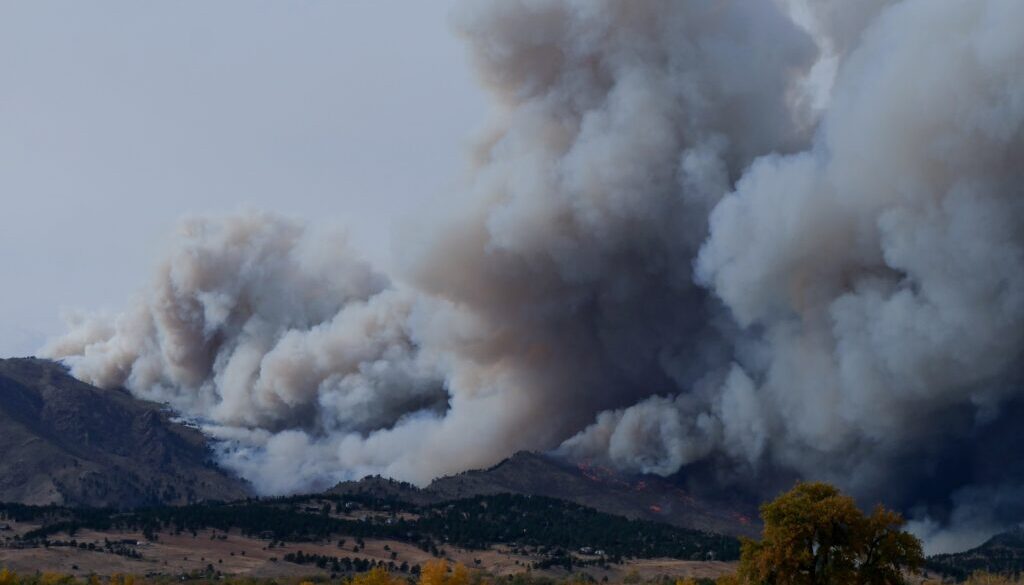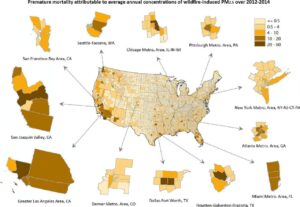Wildfire smoke tied to thousands of deaths and billions in economic losses, researchers warn
As hundreds of wildfires continue to rage across Canada, a new study warns that toxic particulates carried in wildfire smoke can lead to more than 4,000 premature deaths in the United States and $36 billion in annual US economic losses.
People living in California, Florida, Texas, Georgia, Alabama and North Carolina could suffer the highest number of premature deaths due to dangerous particulate matter that is distributed by the smoke from wildfires, researchers determined.
The study, “Quantifying the Premature Mortality and Economic Loss From Wildfire-Induced PM2.5 in the Contiguous US,” was published this month in the journal Science of the Total Environment. Researchers from Cornell University, the University of Houston and the Harvard-Smithsonian Center for Astrophysics, as well as researchers from other institutions, co-authored the work.
The researchers based their findings, in part, on analyses of satellite wildfire emission and air quality data gathered from 2012 to 2014.
The paper is the latest addition to research that underscores how environmental concerns tied to climate change are impacting human health.
Breathing it in
Wildfire smoke contains PM 2.5, defined as particulate matter that measures 2.5 microns in diameter or smaller. When people breathe them in, the particles can impact not just the lungs, but also other organs, including the heart and brain.
Citing prior research, the authors of the new paper said wildfire smoke and related particulate matter are known to have a range of health effects that include myocardial infarctions, heart failure, and strokes, as well as respiratory problems such as asthma. Wildfires could lead to “hundreds to thousands of hospital admissions and emergency department visits, and hundreds of thousands of cases of asthma exacerbation.”
People don’t have to live near burning landscapes to be impacted by wildfire smoke, as New York residents learned earlier this month when skies above them turned a startling shade of hazy orange as wind-carried smoke from the Canadian fires blanketed the region.
“The Quebec wildfires in early June affected human health hundreds of miles away in the distant cities New York, Philadelphia, Baltimore and Washington,” Oliver Gao, a professor of civil and environmental engineering at Cornell University and a senior author on the study, said in a news release.
Peak fire months
Eastern Canada is in the midst of a record-setting fire season now but the western US has also been overcome by blazes in recent years.
Since 1983, the National Interagency Fire Center has documented an average of approximately 70,000 wildfires per year in the United States, with July and August noted as peak months. An average of 1.7 million acres burned in July of each year from 2002 to 2020, according to US government data.
The researchers authoring the new study said they found that Los Angeles, Atlanta and Houston showed particularly large “health burdens” linked to wildfire smoke.
Climate change is contributing to an increased risk of wildfire, as are other factors, and the amount of US land burned by wildfires is about four times what it was forty years ago, researchers say. As climate change brings warmer and drier conditions, wildfire risk rises, according to the Center for Energy and Climate Solutions.
The researchers said that to try to mitigate the “substantial” impacts of wildfire smoke pollution, better forest management and “more resilient” infrastructure is needed.
(Featured photo by Malachi Brooks on Unsplash.)





